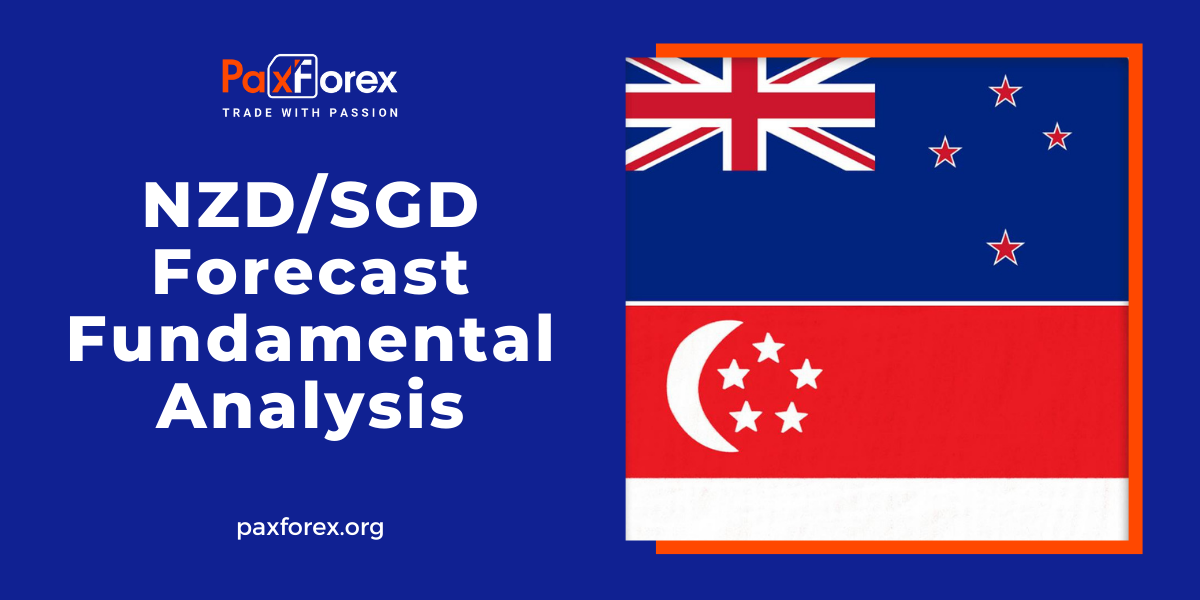
Source: PaxForex Premium Analytics Portal, Fundamental Insight
The New Zealand CPI for the second quarter rose 1.7% quarterly and 7.3% annualized. Economists predicted an increase of 1.5% and 7.1%. Forex traders can compare this to the New Zealand CPI for the first quarter, which expanded 1.8% quarterly and 6.9% annualized.
New Zealand RBNZ Offshore Holdings for June came in at 53.7%. Forex traders can compare this to New Zealand RBNZ Offshore Holdings for May, reported at 53.4%.
Singapore Non-Oil Exports for June increased 3.7% monthly and 9.0% annualized. Economists predicted a rise of 2.3% and 6.7%. Forex traders can compare this to Non-Oil Exports for May, which expanded 2.8% monthly and 12.0% annualized.
Inflationary readings continue to surprise to the upside, and while energy costs moderated in July, inflation is likely to remain stubbornly elevated. One issue traders must realize is that while energy inflation may decrease temporarily, CPI reports indicate a broadening of inflation contributors. It prompted central banks, including the Monetary Authority of Singapore, to tighten monetary policy in an off-cycle meeting, surprising markets and adding to the Singapore Dollar strength. Inflation in New Zealand surged to three-decade highs, and markets price in a 75 basis point interest rate increase, mirroring G7 counterparts, where the Bank of Canada shocked markets with a 100 basis point hike.
Following almost thirteen years of central bank policy mistakes in most G20 economies, negative or near-zero interest rates, and ignorance over structural issues brewing below the surface, fueling a dangerous debt bubble, inflation came home to roost. The global economy will gradually slow into a prolonged recession, while inflation may recede somewhat but remain punishing for governments, businesses, and consumers. Singapore could emerge as a comparably stable Asian currency, while the New Zealand Dollar could struggle amid a weakening and less-diversified economy despite aggressive interest rate increases.
The forecast for the NZD/SGD remains bearish, but traders should expect more volatility ahead as bulls and bears fight for control at a horizontal support area. Adding to downside pressure are the descending Tenkan-sen and Kijun-sen, while the Ichimoku Kinko Hyo Cloud keeps bearish momentum intact with its gradual step lower. After the CCI accelerated out of extreme oversold territory, it has enough momentum for a brief move above zero. Traders should monitor this technical indicator for a lower high before a reversal can plunge it back into negative conditions. Will bears maintain their dominance over the NZD/SGD and force price action into its horizontal support area?Subscribe to the PaxForex Daily Fundamental Analysis and earn over 5,000 pips per month.
Should price action for the NZD/SGD remain inside the or breakdown below the 0.8550 to 0.8650 zone, PaxForex recommends the following trade set-up:
- Timeframe: D1
- Recommendation: Short Position
- Entry Level: Short Position @ 0.8600
- Take Profit Zone: 0.8130 – 0.8235
- Stop Loss Level: 0.8725
Should price action for the NZD/SGD breakout above 0.8650, PaxForex recommends the following trade set-up:
- Timeframe: D1
- Recommendation: Long Position
- Entry Level: Long Position @ 0.8725
- Take Profit Zone: 0.8870 – 0.8990
- Stop Loss Level: 0.8650
Open your PaxForex Trading Account now and add this currency pair to your forex portfolio.













